Criteria of Complexity in Evolution: Cross-Cultural Study in Archaeology of Prehistory
скачать Автор: Kradin, Nikolay N. - подписаться на статьи автора
Журнал: Social Evolution & History. Volume 12, Number 1 / March 2013 - подписаться на статьи журнала
ABSTRACT
In the recent paper (Kradin 2006) I studied the archaeological criteria of the complex societies which Childe called ‘civilizations’. Murdock's database from his paper about criteria of cultural complexity (Murdock and Provost 1973) served there as the investigation source. Murdock's database includes 186 societies, mainly, ethno-historical examples. But he could not take into account the global diffusion of technologies, institutions and ideologies. Many simple societies were already acquainted with the complex societies' achievements in the periods of the pre-industrial world-system and later in the colonial period. Peregrine's Atlas of Cultural Evolution (Peregrine 2003) of prehistoric societies' includes examples from local groups to complex societies, pristine civilizations, and early states (2,300,000– 500 BP). The results of examining this database show a more substantial correlation between the indications than the results of my early study.
INTRODUCTION
In his well-known paper ‘The Urban Revolution’ Vere Gordon Childe (1950) identified archaeological criteria of civilization as an evolutionary stage. In the course of distinguishing civilization from the prestate barbarism (following Lewis Henry Morgan and Friedrich Engels) Childe pointed out ten traits of a civilization (Childe 1950):
1) emergence of urban centers;
2) full-time specialists (craftsmen, merchants, officials, and priests etc.), who worked for bodies that could command surplus from peasants;
3) monumental public building;
4) sizeable surplus product appropriated by elite through taxation or tributes;
5) isolation of ruling groups, including priests, civil and military leaders and officials;
6) appearance of writing system and numerical notation, from which the exact and practical sciences developed: arithmetic, geometry and astronomy;
7) development of the sophisticated artistic style;
8) development of long-distance trade;
9) social solidarity, which is represented and misrepresented by ideological means in temples or sepulchral shrine;
10) state formation.
Later, this list of archaeological characteristics of the civilization stage had undergone numerous improvements. Many archaeologists and anthropologists discussed this problem (see Table 1).
Criteria of civilization
Table1
|
|
Adams 1966 |
Renfrew 1972 |
Haas 1982 |
Masson 1989 |
Pavlenko 1989 |
Maisels 1990, 1999 |
|
1 |
2 |
3 |
4 |
5 |
6 |
7 |
|
Urbanization |
|
X |
X |
X |
X |
X |
|
Monumental architecture |
|
X |
|
X |
X |
X |
|
Writing |
|
X |
X |
X |
X |
|
|
Calendar |
|
|
X |
|
|
|
|
Technological specialization |
X |
X |
X |
|
X |
|
|
Irrigation |
|
|
X |
|
|
|
|
Surplus concentration |
|
|
X |
|
|
X |
|
1 |
2 |
3 |
4 |
5 |
6 |
7 |
|
Burials stratification |
X |
X |
|
|
X |
|
|
Political hierarchy |
X |
|
|
|
X |
|
|
Culture and ideology of elite |
|
|
|
|
X |
|
|
Foreign trade and prestige goods |
|
|
Х |
|
X |
|
|
Bureaucracy |
X |
|
X |
|
|
|
|
Territorial division |
X |
|
|
|
|
|
|
Regional styles |
|
|
X |
|
|
|
|
Full-time specialists |
|
|
|
|
|
X |
|
Representative art |
|
|
|
|
|
X |
|
Exact and predictive sciences |
|
|
|
|
|
X |
|
Political centralization |
X |
|
|
|
|
X |
In the present article I would like to discuss the problem of the complex societies (civilizations) criteria once again. For this purpose I used two databases as sources: Standard Cross-Cultural Sample (Murdock and White 1969, 2006; White 2006) encompassing 186 ethno-historical cultures and Atlas of Cultural Evolution of 289 pre-historical cultures.
STANDARD CROSS-CULTURAL SAMPLE
In my cross-cultural analysis of the civilization characteristics I relied on the Standard Cross-Cultural Sample (SCCS) (Murdock and White 1969, 2006; White 2006) as well as George P. Murdock and Caterina Provost's study (1973). In the latter work, the authors made an attempt to establish criteria of complex societies. They determined ten most significant, from their point of view, criteria:
1) writing and records; 2) fixity of residence; 3) agriculture;
4) urbanization; 5) technological specialization; 6) land transport;
7) money; 8) population density; 9) political integration; and
10) social stratification. The data for the analysis was taken from SCCS. The sample encompasses 186 societies from all regions of the world. In this list, the traits (factors) 1 (Writing and Records), 4 (Urbanization), 5 (Technological Specialization), 7 (Money), 9 (Political Integration) and 10 (Social Stratification) almost completely correspond to the criteria of civilization most popular in archaeology. The characteristic of monumental structures is absent in Murdock and Provost's paper.
The following important question arises: Which level of political integration and social stratification corresponds to the state and civilization according to Childe? In the 1970s, Gregory Johnson and Henri Wright proposed to define the state as a society with a three-level hierarchy. In their opinion, a two-level hierarchy should correspond to the complex chiefdom while three and more levels – to the state (Johnson 1973: 3, 141; Wright and Johnson 1975: 272). The later researchers subjected this conclusion to criticism (Isbell and Schreiber 1978; Cohen 1981; Haas 1982, etc.). According to my interpretation, the nomadic empires had a multilevel hierarchy, but still they were supercomplex chiefdoms (Kradin 2000; 2002, etc.). Therefore, three levels above community can be characteristic both of a state and of a pre-state society. The cross-cultural analysis of 21 early states shows that social stratification in early states was a fairly complex matter. Several social categories with differential access to material and other resources were generally to be found. We distinguished between two basic social strata, an upper and a lower one, and moreover discovered that in the majority of cases a middle stratum also existed. The upper stratum we took to comprise the sovereign, the aristocracy to which belonged a.o. the sovereign's kin, holders of high offices and clan and lineage heads, and the priesthood. The middle stratum was composed of such categories as ministeriales andgentry. To the lower stratum belonged a.o. smallholders and tenants, and less frequently such categories as artisans, traders, servants and slaves (Claessen 1978: 587–588).
For comparison, see Bruce Trigger's statement that: ‘“Early civilization” can thus be summarily defined as the earliest and simplest form of class-based society’ (Trigger 2003: 46). This idea was developed by Robert Chapman (2007: 18–19).
Key characteristics of the early state as a civilization model are scale, whether measured in terms of population size and density, areal extent or size of public buildings, and investment of labour and craftsmanship in wealth items and all material expressions of social position. But we must still distinguish between the structural relations of the state and their materialisation. Lull and Risch have argued that ‘a state structure does not consist of the visible forms of power, pomp and circumstance (e.g.palaces, writing and exotic wealth items), but the systems of exploitation, extortion and physical and ideological coercion which in each case can take distinct forms, given the possibilities of social development which are dialectically related to the needs of the dominant class’ [translation from Spanish by Chapman. – N. K.]. Thus relations of class characterize states. The institutions of the state guarantee the interests of the dominant class, which rules by coercion. ‘The class which is economically dominant also becomes the class which is politically dominant’.
Therefore, three social classes seem to be a more consistent criterion of the state and civilization (in Childe's terminology).
The results of the study of the correlation between Murdock and Provost's variables showed that the strongest correlation exists between the variables Political integration and Social stratification (see Table 2).
Table2
Political Integration and Social Stratification cross-tabulation (SCCS)
|
Political Integration |
Social Stratification |
Total | ||||
|
Egalitarian |
Hereditary slavery |
2 social classes, no castes/ slavery |
2 social classes, castes/ slavery |
3 social classes or castes, w/ or w/out slavery | ||
|
None |
8 |
3 |
0 |
0 |
0 |
11 |
|
Autonomous local communities |
44 |
22 |
1 |
4 |
0 |
71 |
|
1 level above community |
9 |
19 |
8 |
7 |
4 |
47 |
|
2 levels above community |
4 |
8 |
6 |
4 |
6 |
28 |
|
3 levels above community |
0 |
0 |
4 |
5 |
20 |
29 |
|
Total |
65 |
52 |
19 |
20 |
30 |
186 |
|
|
|
Value |
Asymp. Std. Error(a) |
Approx. T(b) |
Approx. Sig. |
|
Interval by Interval |
Pearson's R |
.719 |
.037 |
14.032 |
.000(c) |
|
Ordinal by Ordinal |
Spearman Correlation |
.699 |
.041 |
13.270 |
.000(c) |
|
N of Valid Cases |
|
186 |
|
|
|
The highest value of Pearson's correlation coefficient is just for these two of all the ten variables. This suggests that the forma- tion of political hierarchy is a parallel process with forming ranks and stratification. The strongest relation between the social classes and state was also noted in the Causal Model of state origins by P. Peregrine, C. Ember and M. Ember (2007: 78).
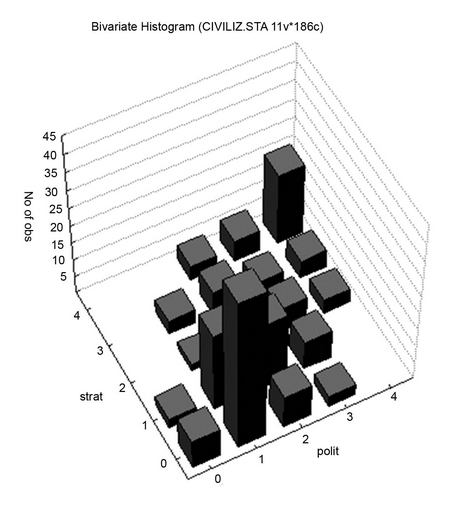
Fig. 1. Political Integration and Social Stratification cross-tabulation (SCCS)
There is another important law which is well demonstrated in the graphic presentation of Table 2. The correlation between the hier- archy and stratification is well seen in Fig. 1. However, there are some cases when societies with developed class stratification have no state hierarchy and when the societies with developed political hierarchy have no developed class structure. The first variant includes societies with a developed stratification but without multilevel political hierarchy. The character of such societies was the subject of discussion. Scholars suggest different terms to denote such societies – heterarchy, corporate network, state analogues, etc. (Berezkin 1995; Crumley 1995, 2001; Korotayev 1995; Blanton et al. 1996; McIntosh 1999; Bondarenko and Korotayev 2000; Kowalewski 2000; Wason and Baldia 2000; Feinman 2001; Grinin 2004, 2009; Bondarenko 2007; Kristiansen 2008; Small 2009). The second variant includes societies with a large number of hierarchy levels but lacking classes. The historical example of such a society is nomadic empires of Inner Asia (Kradin 1992, 2000, 2002, 2011; Skrynnikova 1997; Kradin and Skrynnikova 2006; Turchin 2009, etc.). This graph (see Fig. 1) is a statistical confirmation of the conclusions on the multi-line cultural evolution.
Unfortunately, we failed to find any universal qualitative traits of civilization (according to Childe) using the SCCS. Neither writing system, nor urbanization and monumental architecture, nor any other criteria are a required characteristic of a complex society with statehood and civilization. One can always find a number of exceptions (Kradin 2006). For example, the examination of the correlation between writing and political hierarchy (R = 0.575) shows that there are many societies with developed hierarchy but without writing system. However, there are also opposite examples when the societies with developed writing have no developed internal hierarchy. The correlation between stratification and writing is a bit larger (R = 0.621). It is evident since the society with developed class stratification should have a developed ideology which justifies the inequality. However, there is no reason to speak about writing as a necessary characteristic of a civilization and state. One society with three social classes or castes has zero value of the variable Writing and Records, but four societies with True writing and Records have only hereditary slavery without social classes. The correlation between urbanization, integration and stratification is much smaller. The analysis of all correlations shows that the creation of a developed stratified society with three classes needs a permanent sedentarization, farming agriculture as a basis of economy and various useful crafts with obligatory metal working (Kradin 2006).
ATLAS OF CULTURAL EVOLUTION
In the present study, another database – Atlas of Cultural Evolution (ACE) – is also used (see Peregrine 2001, 2003, 2004). It describes 289 societies from the Paleolith (500,000 BP) to early civilizations, included in 9 volumes of Encyclopedia of Prehistory (Peregrine, Ember 2001–2002). Peregrine slightly changed the variables adapting them for the archaeological sources. More than 200 scientists from 20 countries participated in preparation of information for the database. The results of this study differ from the SCCS analysis (Kradin 2006). They demonstrate not only a quantitative but also a qualitative correlation.
Among all correlations of ACE, the one between Political Inte- gration and Social Stratification is the strongest (Peregrine 2003: 75, table 8.A.1). Pearson's R = 0.899, Spearman Correlation = 0.896 (Table 3, Fig. 2). This correlation is higher than the SCCS correlation; however, the deviations (stateless stratified society and large polities without stratifications), which were observed in the SCCS, are practically absent.
Table3
Political Integration and Social Stratification cross-tabulation (ACE)
|
|
Social Stratification |
Total | |||
|
Egalitarian |
2 social classes |
3 or more social classes or castes | |||
|
1 |
2 |
3 |
4 |
5 |
6 |
|
Political Integration |
Autonomous local communities |
115 |
1 |
0 |
116 |
|
1 |
2 |
3 |
4 |
5 |
6 |
|
|
1 or 2 levels above com- munity |
21 |
81 |
14 |
116 |
|
|
3 or more levels above community |
0 |
1 |
56 |
57 |
|
Total |
|
136 |
83 |
70 |
289 |
|
|
|
Value |
Asymp. Std. Error(a) |
Approx. T(b) |
Approx. Sig. |
|
Interval by Interval |
Pearson's R |
.899 |
.016 |
34.695 |
.000(c) |
|
Ordinal by Ordinal |
Spearman Correlation |
.896 |
.017 |
34.095 |
.000(c) |
|
N of Valid Cases |
|
289 |
|
|
|
a Not assuming the null hypothesis.
b Using the asymptotic standard error assuming the null hypothesis. c Based on normal approximation.
In this study, all 45 correlations between ten variables were considered. However, only the most significant correlations will be presented here. The first important result was obtained in the course of comparison of Writing and Integration. Pearson's R and Spearman Correlation are characterized by rather low values (see Table 4). However, note the value of Gamma = 1.00.
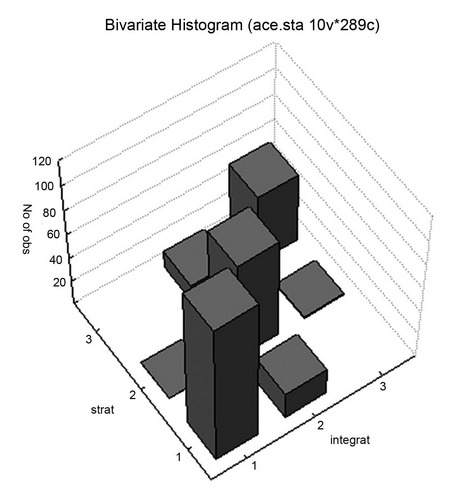
Fig. 2. Political Integration and Social Stratification cross-tabulation (ACE)
Table4
Writing and Political Integration cross-tabulation (ACE)
|
|
Political Integration |
Total | |||
|
Autonomous local communities |
1 or 2 levels above community |
3 or more levels above community | |||
|
Writing and Records |
None |
116 |
116 |
34 |
266 |
|
|
Mnemonic or nonwritten records |
0 |
0 |
2 |
2 |
|
|
True writing |
0 |
0 |
21 |
21 |
|
Total |
|
116 |
116 |
57 |
289 |
|
|
|
Value |
Asymp. Std. Error(a) |
Approx. T(b) |
Approx. Sig. |
|
Ordinal by Ordinal |
Gamma |
1.000 |
.000 |
5.427 |
.000 |
|
|
Spearman Correlation |
.440 |
.041 |
8.301 |
.000(c) |
|
Interval by Interval |
Pearson's R |
.469 |
.042 |
8.995 |
.000(c) |
|
N of Valid Cases |
|
289 |
|
|
|
a Not assuming the null hypothesis.
b Using the asymptotic standard error assuming the null hypothesis. c Based on normal approximation.
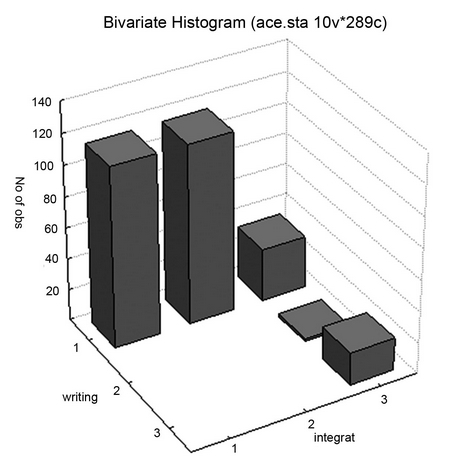
Fig. 3. Writing and Political Integration cross-tabulation (ACE)
In fact, there is a qualitative relation between True writing and three or more levels above community of Political Integration.
It is worth noting that in this case impact of correlation is only unidirectional. All societies with True writing have a political organization with three or more levels above community. However, by no means all societies with three or more levels above community have True writing. In all other samples considered below, an action of correlation is also unidirectional.
One more qualitative relation is revealed between Writing and Stratification. All the societies with True writing have without fail three or more social classes. This suggests that in pristine civilizations writing emerges only with the development of social differentiation and state.
Table5
Writing and Social Stratification cross-tabulation (ACE)
|
|
Social Stratification |
Total | |||
|
Egalitarian |
2 social classes |
3 or more social classes or castes | |||
|
Writing and Records |
None |
136 |
83 |
47 |
266 |
|
|
Mnemonic or nonwritten records |
0 |
0 |
2 |
2 |
|
|
True writing |
0 |
0 |
21 |
21 |
|
Total |
|
136 |
83 |
70 |
289 |
|
|
|
Value |
Asymp. Std. Error(a) |
Approx. T(b) |
Approx. Sig. |
|
Ordinal by Ordinal |
Gamma |
1.000 |
.000 |
5.407 |
.000 |
|
|
Spearman Correlation |
.417 |
.039 |
7.763 |
.000(c) |
|
Interval by Interval |
Pearson's R |
.439 |
.041 |
8.283 |
.000(c) |
|
N of Valid Cases |
|
289 |
|
|
|
a Not assuming the null hypothesis.
b Using the asymptotic standard error assuming the null hypothesis. c Based on normal approximation.
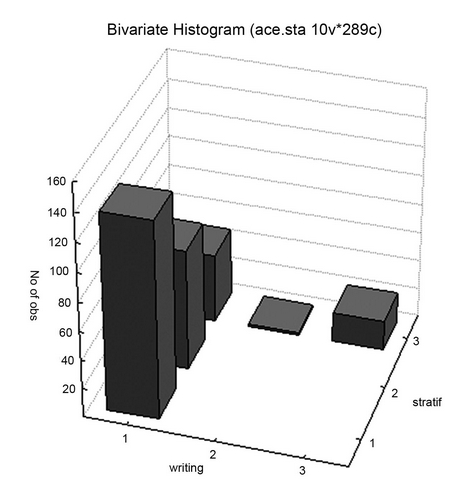
Fig. 4. Writing and Social Stratification cross-tabulation (ACE)
It may seem strange but there is a qualitative relation between True writing and sedentary Fixity of residence. Only sedentary cultures have True writing.
Table6
Writing and Fixity of Residence cross-tabulation (ACE)
|
|
Fixity of Residence |
Total | |||
|
Nomadic |
Seminomadic |
Sedentary | |||
|
Writing and Records |
None |
75 |
51 |
140 |
266 |
|
|
Mnemonic or nonwritten records |
0 |
0 |
2 |
2 |
|
|
True writing |
0 |
0 |
21 |
21 |
|
Total |
|
75 |
51 |
163 |
289 |
|
|
|
Value |
Asymp. Std. Error(a) |
Approx. T(b) |
Approx. Sig. |
|
Ordinal by Ordinal |
Gamma |
1.000 |
.000 |
5.159 |
.000 |
|
|
Spearman Correlation |
.249 |
.027 |
4.347 |
.000(c) |
|
Interval by Interval |
Pearson's R |
.236 |
.026 |
4.123 |
.000(c) |
|
N of Valid Cases |
|
289 |
|
|
|
a Not assuming the null hypothesis.
b Using the asymptotic standard error assuming the null hypothesis. c Based on normal approximation.
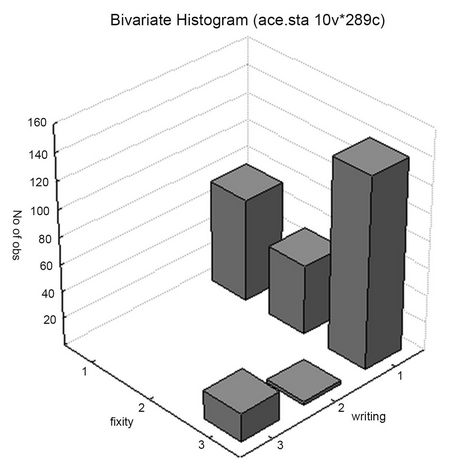
Fig. 5. Writing and Fixity of Residence cross-tabulation (ACE)
This conclusion contradicts the later data. The nomadic Turk Khaganates had their own runic writing in the 6th – 8th centuries AD. The Mongols also had their writing and created the unique man- uscript of the young Genghis Khan's life – Secret History. However, this conclusion is true for prehistoric pastoral nomads. Even
the Xiongnu who established the nomadic empire (they were taken into account in ACE, Peregrine 2003: 4) used eunuchs-defectors for diplomatic correspondence with the Chinese Emperors (Kradin 2002).
There is also a significant qualitative relation between Writing and Urbanization. These are two features that can be identified in the course of archaeological investigations. All societies with True writing have the largest settlement with 400 and more persons.
Table7
Writing and Urbanization cross-tabulation (ACE)
|
|
Urbanization |
Total | |||
|
Largest settlement < 100 persons |
Largest settlement 100–399 persons |
Largest settlement 400+ persons | |||
|
Writing and Records |
None |
149 |
74 |
43 |
266 |
|
|
Mnemonic or nonwritten records |
0 |
0 |
2 |
2 |
|
|
True writing |
0 |
0 |
21 |
21 |
|
Total |
|
149 |
74 |
66 |
289 |
|
|
|
Value |
Asymp. Std. Error(a) |
Approx. T(b) |
Approx. Sig. |
|
Ordinal by Ordinal |
Gamma |
1.000 |
.000 |
5.414 |
.000 |
|
|
Spearman Correlation |
.430 |
.040 |
8.072 |
.000(c) |
|
Interval by Interval |
Pearson's R |
.460 |
.042 |
8.777 |
.000(c) |
|
N of Valid Cases |
|
289 |
|
|
|
a Not assuming the null hypothesis.
b Using the asymptotic standard error assuming the null hypothesis. c Based on normal approximation.
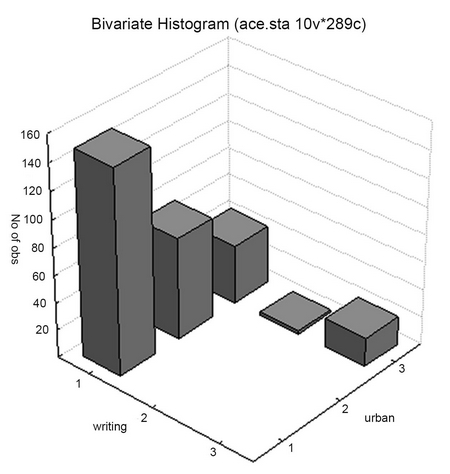
Fig. 6. Writing and Urbanization cross-tabulation (ACE)
Finally, there is a qualitative relation between True writing and Metalwork. Where the writing exists, there is necessarily metallurgy in one form or another.
Table8
Writing and Technological Specialization cross-tabulation (ACE)
|
|
Technological Specialization |
Total | |||
|
None |
Ceramics |
Metalwork (alloys, forging, casting) | |||
|
Writing and Records |
None |
95 |
117 |
54 |
266 |
|
|
Mnemonic or nonwritten records |
0 |
0 |
2 |
2 |
|
|
True writing |
0 |
0 |
21 |
21 |
|
Total |
|
95 |
117 |
77 |
289 |
|
|
|
Value |
Asymp. Std. Error(a) |
Approx. T(b) |
Approx. Sig. |
|
Ordinal by Ordinal |
Gamma |
1.000 |
.000 |
5.395 |
.000 |
|
|
Spearman Correlation |
.398 |
.038 |
7.357 |
.000(c) |
|
Interval by Interval |
Pearson's R |
.402 |
.038 |
7.427 |
.000(c) |
|
N of Valid Cases |
|
289 |
|
|
|
a Not assuming the null hypothesis.
b Using the asymptotic standard error assuming the null hypothesis. c Based on normal approximation.
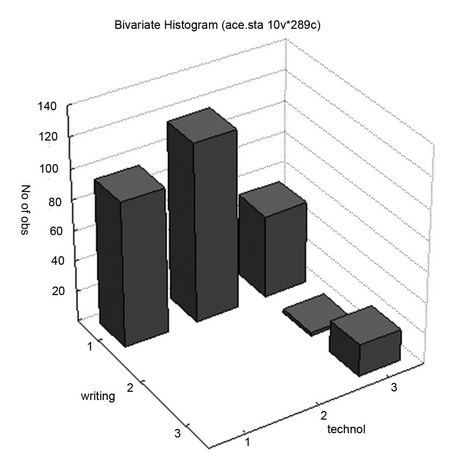
Fig. 7. Writing and Technological Specialization cross-tabulation (ACE)
CONCLUSIONS
The analysis of SCCS demonstrates a rigid correlation between sed- entarization, agriculture, metallurgy, classes and state. However, we failed to find a confirmation of Childe's idea of the urban revolu- tion. Neither writing, nor urbanization and monumental architecture are obligatory characteristics of civilization. The analysis of ACE shows a low and middle value of Pearson's R and Spearman correlation between these variables. However, there are qualitative relations between classes, state, urbanization and writing. Gamma is equal to 1.00. Therefore, the following conclusions can be drawn from the present study. There exist states, towns and class societies without writing. However, where the writing emerges a state, classes and urbanization exist too.
The absence of qualitative relations in the SCCS can be explained by the fact that SCCS includes 186 ethno-historical societies. In the period of colonialism the majority of common societies were acquainted with the achievements of civilizations – high technologies, writing and other institutions. Even in the period of pre-industrial world-systems, many simple societies were subjected to transformation due to the effect of the world-system's centers. The diffusion of technologies and ideas significantly changed the simple societies. That is why the differences are of qualitative rather than quantitative character.
The cross-cultural analysis of the pre-historic societies confirms the principal conclusions of Childe's theory of the urban revolution. It was just writing that proved to be the threshold that distinguished the pre-state societies from civilization. One can concur in this con- clusion. The written language first emerged as a bureaucrats' tool to record laws, orders and calculate taxes. Only later on, it began to be used for other purposes and was adopted by other societies that were only on their way to civilization.
NOTE
* This study was supported by the Program of fundamental studies of Far-Eastern Branch of the Russian Academy of Sciences, No 12-III-А-11-007.
Adams, R. McC.
1966. The Evolution of Urban Society. Chicago, IL: University of Chicago Press.
Berezkin, Yu. E.
1995. Alternative Models of the Middle Range Society. ‘Individualistic’ Asia vs. ‘Collectivistic’ America? In Kradin, N. N., and Lynsha, V. A. (eds.), Alternative Pathways to Early State (pp. 75–92). Vladivostok: Dal'nauka.
Blanton, R. E., Fienman, G. M., Kowalewski, S. A., and Peregrine, P. N. 1996. A Dual-Process Theory for the Evolution of Mesoamerican Civilization. Current Anthropology 37: 1–14, 73–86.
Bondarenko, D. M.
2007. Homoarchy as a Principle of Sociopolitical Organization. Anthropos 102: 187–199.
Bondarenko, D. M., and Korotayev, A. V. (eds.)
2000. Civilizational Models of Politogenesis. Moscow: Center for Civilizational and Regional Studies of the Russian Academy of Sciences.
Chapman, R.
2007. Evolution, Complexity and the State. In Kohring, S., and Wynne-Jones, S. (eds.), Socializing Complexity: Structure, Interaction and Power in Archaeological Discourse (pp. 13–28). Oxford: Oxbow books.
Childe, V. G.
1950. The Urban Revolution. Town Planning Review 21: 3–17.
Claessen, H. J. M.
1978. The Early State: A Structural Approach. In Claessen, H. J. M., and Skalnik, P. (eds.), The Early State (pp. 596–533). The Hague: Mouton.
Cohen, R.
1981. Evolution, Fission and the Early State. In Claessen, H. J. M., and Skalnik, P. (eds.), The Study of the State (pp. 87–115). The Hague: Mouton.
Crumley, C.
1995. Heterarchy and the Analysis of Complex Societies. In Ehrenreich, R., Crumley, C., and Levy, J. (eds.), Heterarchy and the Analysis of Complex Societies (pp. 1–5). Washington, D.C.: American Anthropological Association.
2001. Communication, Holism, and the Evolution of Sociopolitical Complexity. In Haas, J. (ed.), From Leaders to Rulers (pp. 19–36). New York: Kluwer Academic.
Feinman, G.
2001. Mesoamerican Political Complexity: The Corporate Network Dimension. In Haas, J. (ed.), From Leaders to Rulers (pp. 151–175). New York: Kluwer Academic.
Grinin, L. E.
2004. The Early State and Its Analogues: A Comparative Analysis. In Grinin, L. E., Carneiro, R. L., Bondarenko, D. M., Kradin, N. N., and Korotayev, A. V. (eds.), The Early State, Its Alternatives and Analogues (pp. 88–136). Volgograd: Uchitel.
2009. Pathways of Politogenesis and Models of the Early State Formation. Social Evolution & History 8(1): 92–132.
Haas, J.
1982. The Evolution of the Prehistoric State. New York: Columbia University Press.
Isbell, W., and Schreiber, K.
1978. Was Huari a State? American Antiquity 43: 372–389. Johnson, G.
1973. Local Exchange and Early State Development in Southwestern
Iran. Anthropological Papers No 51. Ann Arbor, MI: University of Michigan, Museum of Anthropology.
Korotayev, A. V.
1995. Mountains and Democracy. In Kradin, N. N., and Lynsha, V. A. (eds.), Alternative Pathways to Early State (pp. 60–74). Vladivostok: Dal'nauka.
Kowalewski, S.
2000. Cyclical Transformations in North American Prehistory. In Kradin et al. 2000: 177–187.
Kradin, N. N.
1992. Nomadic Societies. Vladivostok: Dal'nauka. In Russian (Крадин, Н. Н. Кочевые общества. Владивосток: Дальнаука).
2000. Nomadic Empires in Evolutionary Perspective. In Kradin et al.
2000: 274–288.
2002. The Xiongnu Empire. 2nd ed. Moscow: Logos. In Russian (Крадин, Н. Н. Империя Хунну. М.: Логос).
2006. Archaeological Criteria of Civilization. Social Evolution & His- tory 5(1): 89–108.
2011. Stateless Empire: The Structure of the Xiongnu Nomadic SuperComplex Chiefdom. In Brosseder, U., and Miller, B. (eds.), Xiongnu Archaeology: Multidisciplinary Perspectives of the First Steppe Empire in Inner Asia (pp. 77–96). Bonn: Rheinische Friedrich-Wilhelms-Universitat Bonn.
Kradin, N. N., Korotayev, A. V., Bondarenko, D. M., de Munck, V., and Wason, P. K. (eds.)
2000. Alternatives of Social Evolution. Vladivostok: Far Eastern Branch of the Russian Academy of Sciences.
Kradin, N. N., and Skrynnikova, T. D.
2006. The Genghis Khan Empire. Moscow: Vostochnaya literatura RAN. In Russian (Крадин, Н. Н., Скрынникова, Т. Д. Империя Чингисхана. М.: Восточная литература).
Kristiansen, K.
2008. The Rules of the Game. Decentralised Complexity and Power Structures. In Kohring, K., and Wynne-Jones, S. (eds.), Socializing Complexity: Approaches to Power and Interaction in Archaeological Discourse (pp. 60–75). Oxford: Oxford books.
Maisels, Ch.
1990. The Emergence of Civilization. From Hunting and Gathering to Agriculture, Cities, and the State in the Near East. London – New York: Routledge.
1999. Early Civilizations of the Old World: The Formative Histories of Egypt, the Levant, Mesopotamia, India, and China. New York: Routledge.
Masson, V. M.
1989. The First Civilizations. Leningrad: Nauka. InRussian(Маcсон, В. М. Первые цивилизации. Л.: Наука).
McIntosh, S. K. (ed.)
1999. Beyond Chiefdoms: Pathways to Complexity in Africa. Cambridge: Cambridge University Press.
Murdock, G., and Provost, C.
1973. Measurement of Cultural Complexity. Ethnology 12: 379–392. Murdock, G. P., and White, D. R.
1969. Standard Cross-Cultural Sample. Ethnology 8: 329–369.
2006. Standard Cross-Cultural Sample: on-line edition. Social Dynamics and Complexity. Working Papers Series. URL: http://escholarship.org/ uc/item/62c5c02n
Pavlenko, Yu. V.
1989. Early-class Societies (Genesis and the Ways of Development). Kiev: Naukova Dumka. In Russian (Павленко, Ю. В. Раннеклассовые общества (Генезис и пути развития). Киев: Наукова Думка).
Peregrine, P. N.
2001. Cross-cultural Comparative Approaches in Archaeology. Annual Review of Anthropology 30: 1–18.
2003. Atlas of Cultural Evolution. World Cultures 14(1): 1–89.
2004. Cross-Cultural Approaches in Archaeology: Comparative Ethnology, Comparative Archaeology, and Archaeoethnology. Journal of Archaeological Research 12: 281–309.
Peregrine, P. N., and Ember, M. (eds.)
2001–2002. Encyclopedia of Prehistory. 9 vols. New York: Kluwer/ Plenum.
Peregrine, P. N., Ember, C. R., and Ember, M.
2007. Modeling State Origins Using Cross-Cultural Data. Cross-Cultural Research 41: 75–86.
Renfrew, C.
1972. The Emergence of Civilization: The Cyclades and Aegean in the Third Millennium B.C. London: Methuen.
Skrynnikova, T. D.
1997. Charisma and Power during the Epoch of Chinggis Khan. Moscow: Vostochnaya literatura. In Russian (Скрынникова, Т. Д. Харизма и власть в эпоху Чингисхана. М.: Восточная литература).
Small, D.
2009. The Dual-Processual Model in Ancient Greece: Applying a Post- Neoevolutionary Model to a Data-Rich Environment. Journal of Anthropological Archaeology 28: 205–221.
Trigger, B.
2003. Understanding Early Civilizations: A Comparative Study. Cambridge: Cambridge University Press.
Turchin, P.
2009. A Theory for Formation of Large Empires. Journal of Global History 4: 191–217.
Wason, P. K., and Baldia, M. O.
2000. Religion, Communication, and the Genesis of Social Complexity in the European Neolithic. In Kradin et al. 2000: 138–148.
White, D. R.
2006. Pinpointing Sheets for the Standard Cross-Cultural Sample: Complete Edition. World Cultures 17 (1): 1–223.
Wright, H., and Johnson, G.
1975. Population, Exchange and Early State Formation in Southwestern Iran. American Anthropologist 77: 267–289.





